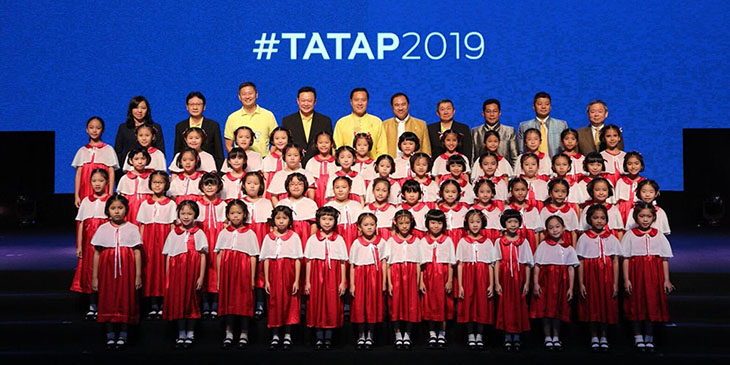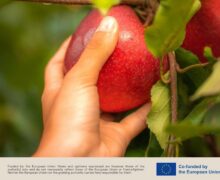TAT responds to government expectations, drives Thai tourism to reduce economic, social disparities

The Tourism Authority of Thailand (TAT) has unveiled an Action Plan for 2019 that will seek to drive visitor flows to provinces with less than four million annual trips, alleviate the negative impacts of tourism, and enhance happiness among the Thai people.
Mr. Yuthasak Supasorn, TAT Governor, told a press conference on the TAT Marketing Action Plan 2019 that these will be the key challenges in 2019, as TAT seeks to better balance the economic value of inbound visitor arrivals with the socio-cultural and environmental impacts of tourism growth.
He said that inbound tourism arrivals would need to be maintained but monitored closely, so that strategies can be adjusted in line with economic trends.
Thailand will focus more on short-haul markets to offset the risk, focus more closely on specific customer segments and monitor behavioural changes and demand trends. It will also need to make better use of digital technologies, especially the opportunities presented by Big Data, to maintain its market leadership.
In 2019, TAT will maintain its top three priorities, and add one more, as follows:
1) Using Gastronomy as a means of reaching out to local communities and experiences. Recent projects; such as, the Michelin Guidebook 2019 will be used to promote Thailand as an outstanding gastronomic destination. A second book is expected to be launched this November.
Future activities will follow the Michelin Food Festival 2018, the first of its kind for high-end street food of Thailand, featuring chefs from Bib Gourmand Michelin star restaurants (quality restaurants, and Plate labels (special dishes recommended by Michelin). This project will be targetted at foodies and family travellers, both Thai and foreigners.
Recently TAT has launched the “Eat Thai, Visit Thai” project, launched by the Thai Prime Minister in London. This project aims to use Thai restaurants in the UK as a public relations channel to promote Thai food of all Thai regions. It will also promote the local culinary culture and local ingredients, and stimulate demand for raw materials from Thailand.
2) Enhance brand value via Content Marketing. Apps such as “Knowing Thai” will be used to attract the “gurus” who can be storytellers on Thai society, religion, history, culture and food.
3) Creating environmental consciousness by organising more waste disposal activities. Increased tourism arrivals also increase the volume of garbage. In 2018, TAT has organised 83 clean-up projects, which reduced the amount of tourism-generated waste by an estimated 10,000 kilogrammes. Next year, TAT will give more importance to Corporate Social Responsibility (CSR) by merging environmental consciousness into its working system both within and outside the organisation.
4) Boosting the identity and character of secondary tourist destinations by creating travel routes that better distribute visitor flows from primary to secondary cities as per the following “A B C” concept.
A – Additional: Linking primary and secondary cities.
B – Brand New: Promoting new potential secondary cities.
C – Combined: Combining secondary cities together.
TAT will work with the public and private sectors and local communities to review their willingness to receive visitors and assess their marketing needs.
Potential target groups include 1) senior citizens and female travellers who are showing good growth in terms of both volume and purchasing power; 2) Gen Y or the Millennial Group (17-36 years), who know what they want in life and are adept at using social media to communicate powerful messages, and 3) working people, who will be targeted by a “Travel on Weekday” campaign to reduce the impact of peaks-and-troughs in daily and seasonal demand.
TAT will also promote more travel for local seminars and incentives but encourage local companies to include a strong CSR component with local communities, which are considered ready to receive tourists. This will help distribute income to local communities and enhance bonding between the visitors and hosts.
Targets and directions in 2019
TAT has set a target of revenue increase of 12% for international markets, and 10% for the domestic market.
TAT will promote Thailand as a “Weekend Destination” in short-haul markets. This will boost the frequency of travel in five main directions; such as, Go High / Go for New Customers / Go Local / Go Low Season and Go Digital, to reach different target groups in each region.
The direction of the domestic market promotion will be focused on content creation with interesting stories to enhance the knowledge of and love for Thailand among the Thai people, and boost the value of the kingdom’s tourism products. This will lead to increased revenue by growing the frequency of travel as well as daily expenditure per capita.
The direction of the international communication concept will be the “Amazing Thailand: Open to the New Shades” campaign by presenting “The Millions of Hidden Shades”. Foreign visitors will be invited to travel to Thailand and experience its many hidden and unique aspects.
At the same time, the communication concept for the domestic market will be “Amazing Thai Thè” (Thè: Coolness) campaign. This will involve using a “Local Hero”, a representative of the local community who can act as a “champion” and communicate stories of local culture, wisdom and the way of life to tourists.
However, the urgency is to maintain the natural resources and local identity, and prevent damage by the growth of irresponsible tourism. TAT has the dual responsibility of expanding market opportunities while seeking cooperation with all relevant sectors to ensure sustainability and inclusivity.
source: TAT News




